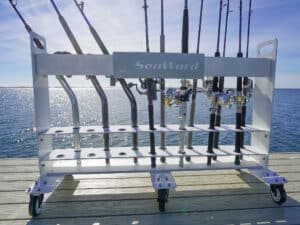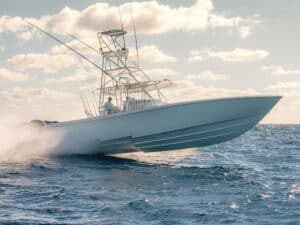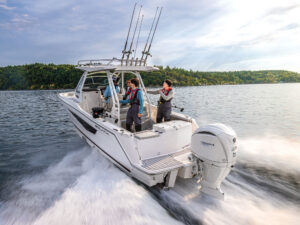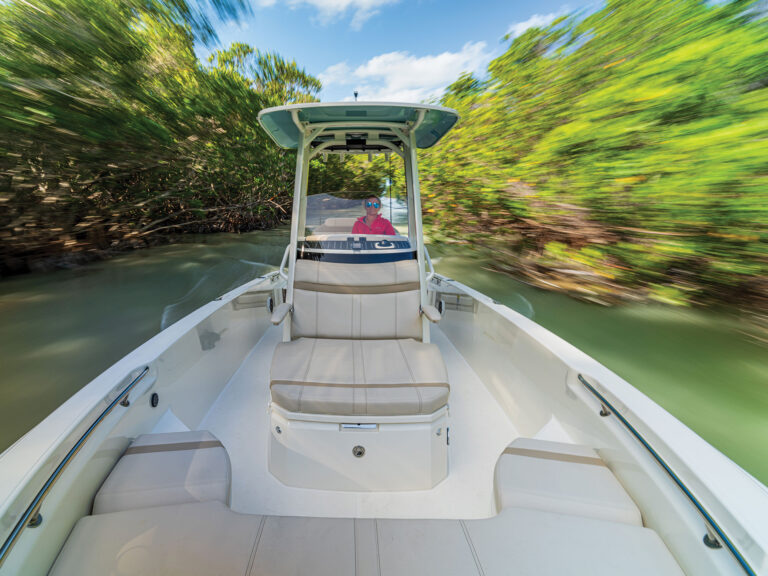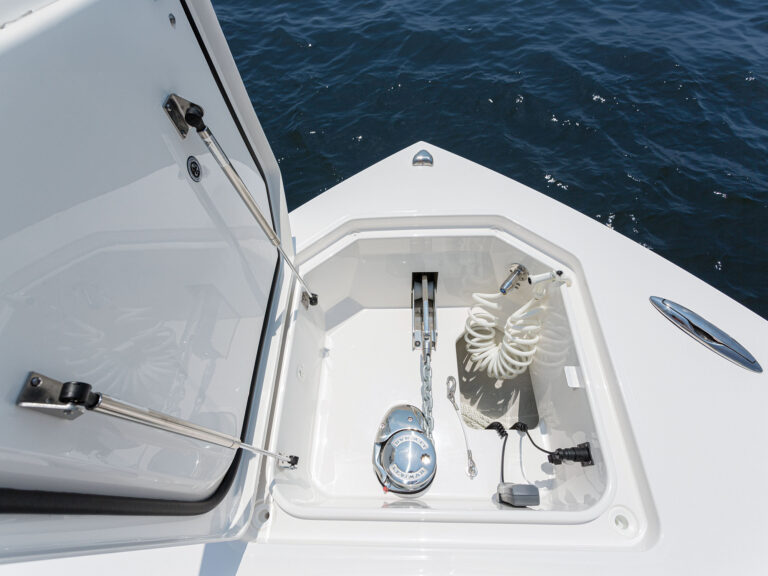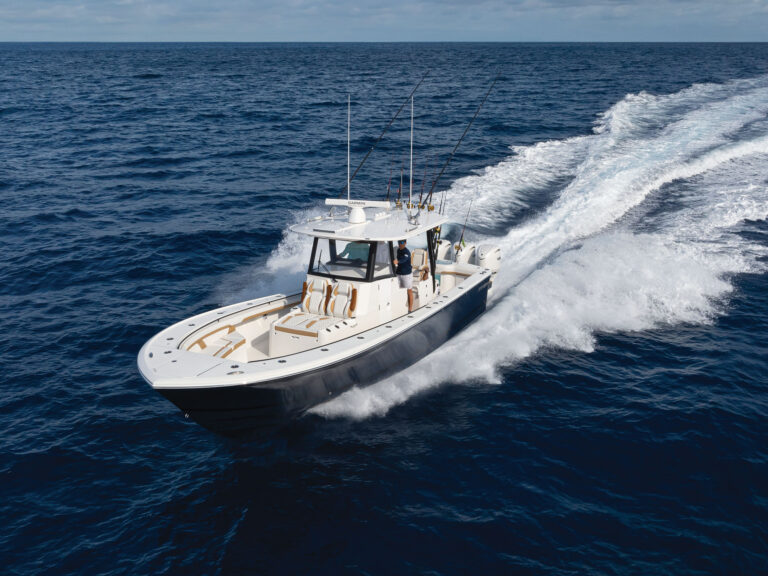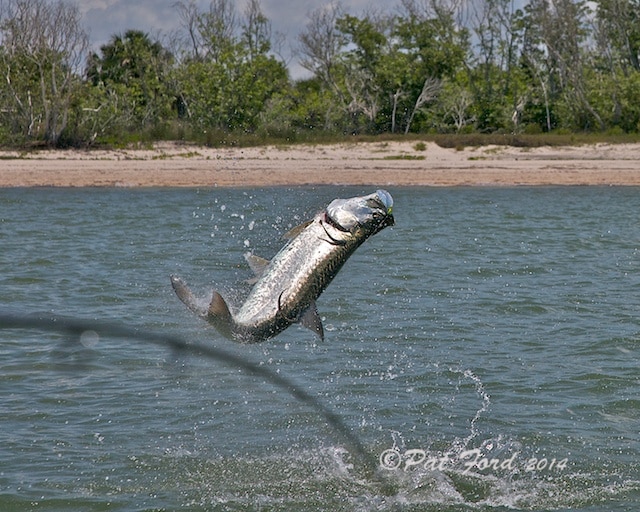
Learning how to catch tarpon takes trial and error, but if there is one thing that leads to good fishing, it’s being at the right pass at the right time. And you need to understand when it’s the best time to fish at your preferred tarpon destination. Most savvy tarpon captains choose to anchor in the passes and fish live baits under floats. Anchor lines are rigged with floats and quick-release loops so the boat can be released quickly from the anchor and the tarpon can be chased down immediately after hook-up.
But you needn’t anchor in all situations. When the bite slows down in midtide, tarpon will often spread out into the deeper waters on the bay side of the passes. In that situation, basically when you stop seeing them in the passes themselves, drifting might be a better solution in order to cover more ground and hopefully elicit a strike.
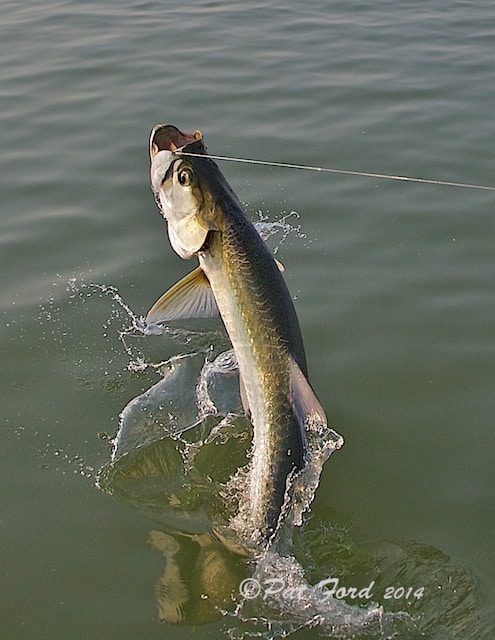
Tarpon Fishing Tips and Techniques
In the summer, after roughly the middle of May, the mullet thin out and many tarpon fishermen switch to crabs. A 100-pound tarpon will eagerly slurp down a small crab the size of a silver dollar, so don’t let a bait-and-tackle shop try to sell you crabs the size of Frisbees — you don’t need them, and they won’t work as well. Mullet can be cast-netted, or you can sometimes buy them from a bait truck at marinas, but that’s not always reliable. You’re much more likely to find crabs on a consistent basis, and they work great. You will also pick up an occasional permit when using crabs for bait, a decidedly wonderful bonus.

When trolling around for tarpon, deploy two baits behind the skiff, one fished about 30 feet back in the current, and the second fished about twice that far back. Try to have another angler pitch a free-floating bait forward and off to the side, letting that bait drift back with the current.
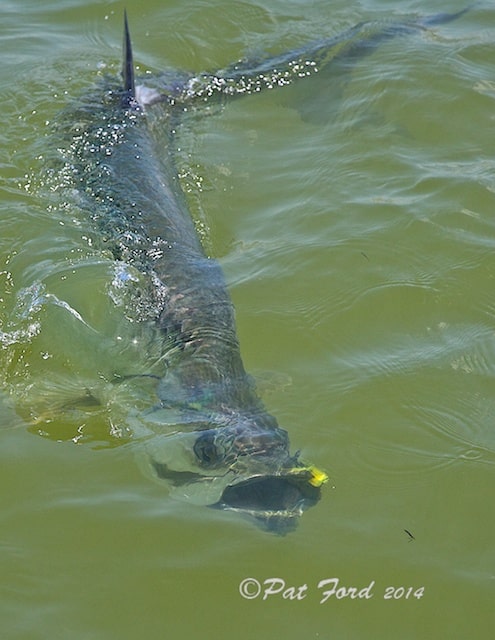
As an alternative to live baits, you can also cast lures off to the side. Try bouncing a white jig along the bottom with a long grub tail attached. You can also dredge with a fly rod spooled with a sinking line.
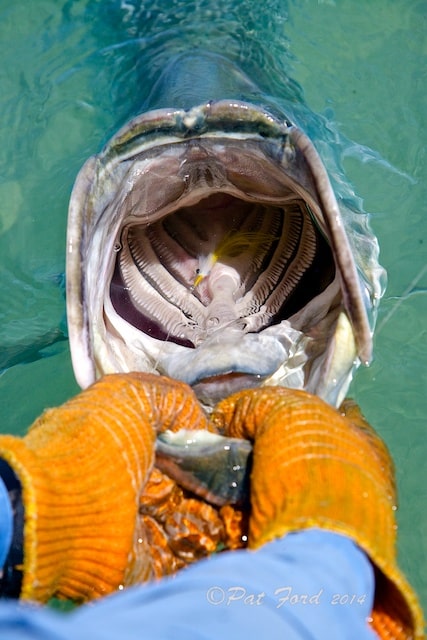
When you hook a tarpon, get on top of them quickly to maintain control of the fish. These are large, strong fish, and it takes some power to bring them to the leader and release them.
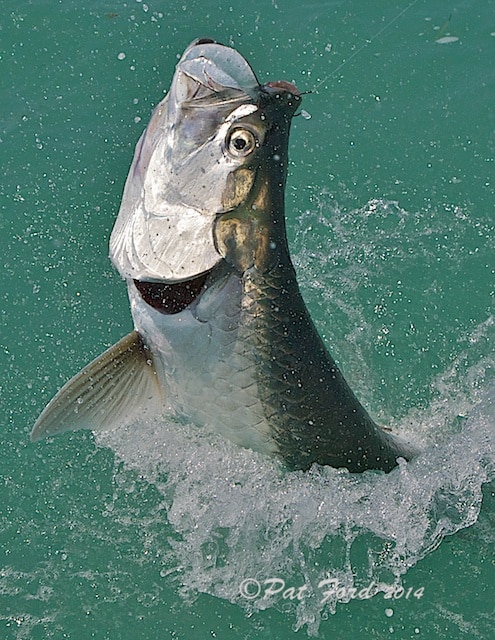
Simple Rigs Equals Silver Kings
Rigging for tarpon is relatively simple. Start with a 3-foot Bimini twist tied to 5 feet of 80-pound leader with a Bristol knot, and with a short piece of 90-pound fluorocarbon between the mono and the circle hook. Of course, you can use all mono or all fluorocarbon, but some fishermen attest that you can get more bites with fluorocarbon. Slide your float of choice (brightly colored foam floats are easier to see than cork versions) onto the leader before you tie on the hook and secure it at the top of the heavy leader. That’s it.

It remains true that tarpon, which have large eyes and excellent vision, are easiest to fool when light levels are low. That’s why after dark is typically most productive, dawn or dusk are next, and overcast days yield more strikes than bright days. Even though it is a bit more challenging, some fishermen still prefer to fish for tarpon during the day to fully enjoy the visual excitement of their incredible aerobatic antics. They also bite artificials more readily if the water is less than bathtub clear. There doesn’t seem to be any such thing as too much turbidity.

With weather, wind can be a different story. Tarpon do not like wind. Perhaps that’s at least partly because wind-driven waves tend to suspend larger sand particles in the water, which they find irritating. It never surprises to see them vanish quickly when a sudden wind starts making waves, even in relatively clean water.
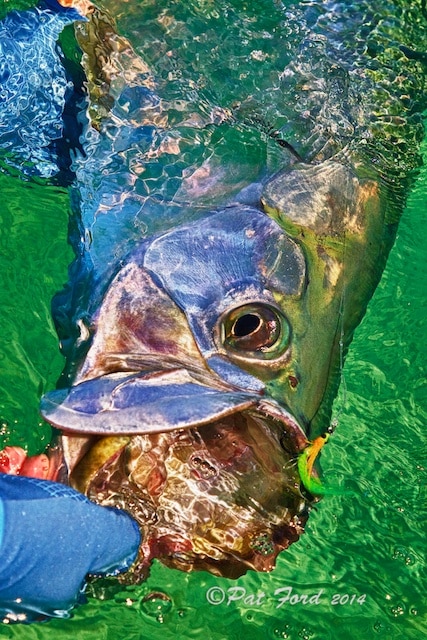
When fly fishing for tarpon, the biggest and arguably most common mistake anglers make is the dreaded trout set. Trout setting is when the angler simply lifts the rod tip to set the hook, which works great in freshwater. Salt water fish require a strip-set, keeping the rod pointed low and at the fly and using the line hand to drive the hook home. Strip-setting on any species takes discipline but especially on a tarpon.
When you see the gills flare and that huge bucket mouth engulf your fly, it’s awfully hard not to react immediately with an instinctive trout set. To avoid this blunder, remain calm, keep your composure and even when you see the fish eat your fly, continue stripping. Strip until you feel weight and then strip hard before raising your rod tip. Continuing to strip until you feel weight not only aids in a solid hookup, but it also keeps you in the game. Sometimes, anglers strip the fly out of the fish’s mouth before it’s closed, which keeps it in front of the fish and in the zone. Trout setting is not only the least likely and least efficient way to hook a tarpon on fly, but doing so completely pulls the fly out of the feeding zone of the fish.


